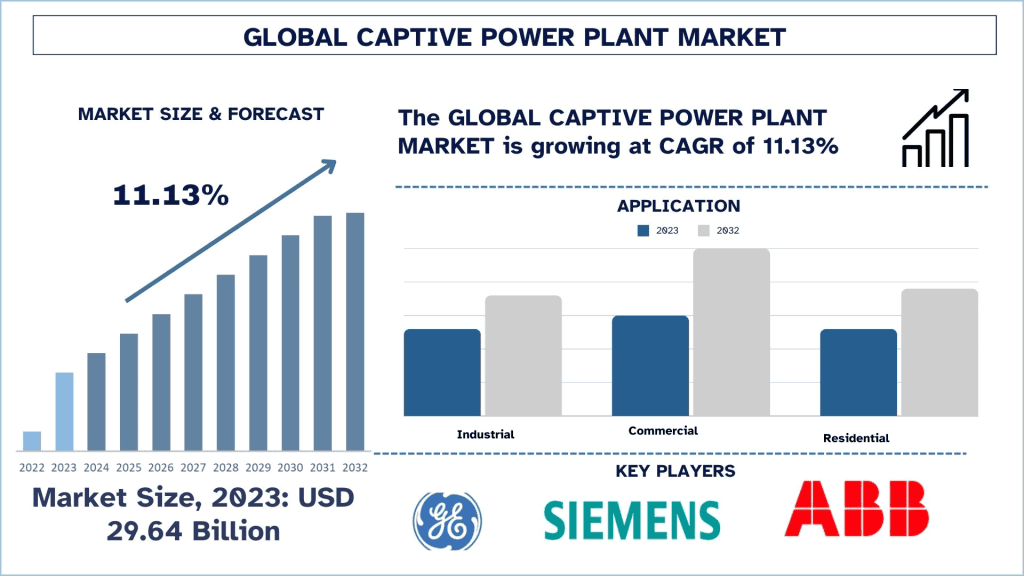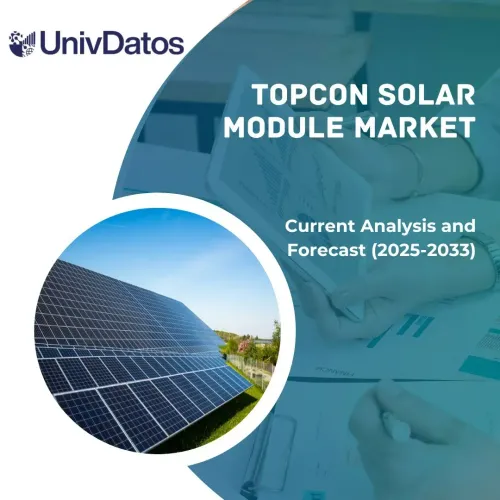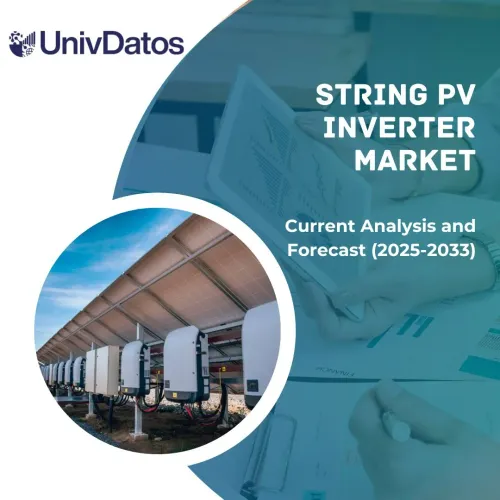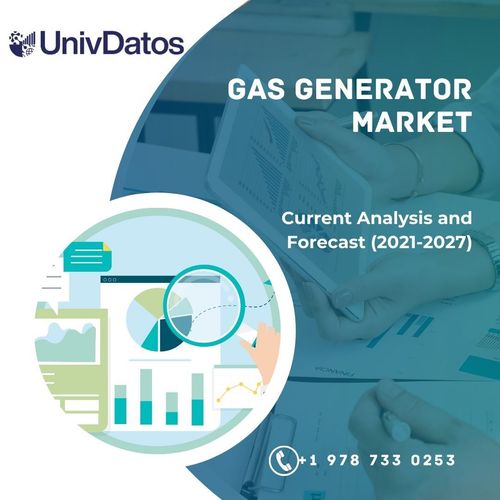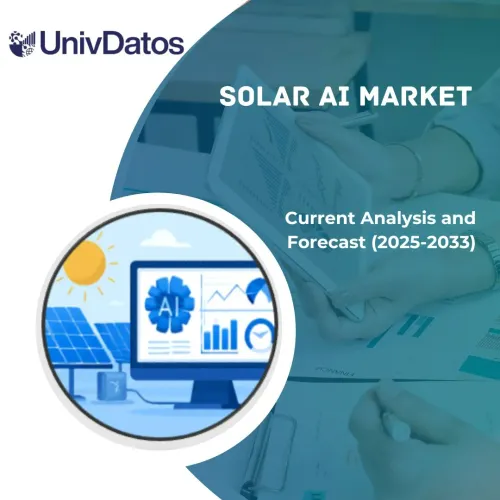- Startseite
- Über uns
- Industrie
- Dienstleistungen
- Lesen
- Kontaktieren Sie uns
Markt für Eigenstromerzeugungsanlagen: Aktuelle Analyse und Prognose (2024-2032)
Betonung des Brennstofftyps (Kohle, Gas, Diesel, Erneuerbare Energien und Sonstige); Anwendung (Industrie, Gewerbe und Wohnen); und Region/Land
Marktgröße und -prognose für Eigenstromerzeugungsanlagen
Der Markt für Eigenstromerzeugungsanlagen wurde im Jahr 2023 auf 29,64 Milliarden USD geschätzt und wird voraussichtlich mit einer starken CAGR von rund 11,13 % im Prognosezeitraum (2024-2032) wachsen. Eigenstromerzeugungsanlagen haben sich als praktikable Lösung für Industrien herauskristallisiert, die eine zuverlässige und kostengünstige Stromquelle suchen. Diese in sich geschlossenen Einheiten werden in erster Linie gebaut, um den Strombedarf einer bestimmten Industrie oder eines Unternehmens zu decken, wodurch die Abhängigkeit vom Netz verringert und eine unterbrechungsfreie Stromversorgung gewährleistet wird. Eigenstromerzeugungsanlagen können von kleinen Einheiten, die einige Kilowatt erzeugen, bis hin zu großen Anlagen reichen, die mehrere Megawatt Strom erzeugen, je nach Umfang und Anforderungen der Industrie. Die primären Energiequellen für Eigenstromerzeugungsanlagen umfassen Diesel, Erdgas, Kohle, Biomasse und erneuerbare Energien wie Solar- und Windenergie.
Marktanalyse für Eigenstromerzeugungsanlagen
Der Aufstieg von Eigenstromerzeugungsanlagen hat mehrere bedeutende Auswirkungen auf Industrien und den Energiesektor. Erstens können Industrien durch die Erzeugung ihres Stroms ihre Abhängigkeit vom Netz verringern und damit die Risiken im Zusammenhang mit Stromausfällen und Schwankungen in der Netzversorgung mindern. Diese erhöhte Zuverlässigkeit kann zu einer höheren Produktivität und betrieblichen Effizienz für Unternehmen führen, insbesondere in Sektoren, in denen eine kontinuierliche Stromversorgung unerlässlich ist, wie z. B. in der Fertigung und im Gesundheitswesen. Zweitens bieten Eigenstromerzeugungsanlagen den Industrien eine größere Kontrolle über ihre Energiekosten, da sie ihre Stromerzeugung an ihre spezifischen Bedürfnisse und Verbrauchsmuster anpassen können. Diese Flexibilität kann insgesamt zu Kosteneinsparungen führen, insbesondere in Regionen, in denen die Strompreise volatil sind oder häufigen Schwankungen unterliegen. Darüber hinaus können Eigenstromerzeugungsanlagen Industrien helfen, ihren CO2-Fußabdruck zu reduzieren, indem sie auf sauberere und nachhaltigere Energiequellen umsteigen und somit zum Umweltschutz und zu den Bemühungen zur gesellschaftlichen Verantwortung von Unternehmen beitragen.
Darüber hinaus sieht die Zukunft der Eigenstromerzeugungsanlagen vielversprechend aus, da die Nachfrage nach zuverlässigen und kostengünstigen Stromlösungen weiter wächst. Um von diesem Trend zu profitieren, müssen Industrien und politische Entscheidungsträger zusammenarbeiten, um die wichtigsten Herausforderungen anzugehen und Möglichkeiten für eine breitere Einführung von Eigenstromerzeugungsanlagen zu erkunden. Ein entscheidender Aspekt ist die Notwendigkeit unterstützender Richtlinien und Vorschriften, die Industrien dazu anregen, in die Infrastruktur für Eigenstromerzeugung zu investieren. Regierungen können Steueranreize, Subventionen oder Einspeisetarife einführen, um die Nutzung von Eigenstromerzeugungsanlagen zu fördern und so deren Einsatz und Akzeptanz in verschiedenen Sektoren zu beschleunigen. Darüber hinaus können technologische Fortschritte wie die Integration von Smart-Grid-Technologien, Energiespeicherlösungen und dezentralen Energiemanagementsystemen die Effizienz und Zuverlässigkeit von Eigenstromerzeugungsanlagen verbessern.
Markttrends für Eigenstromerzeugungsanlagen
Wandel zu erneuerbaren Energien
Der Wandel zu erneuerbaren Energien ist unbestreitbar ein wichtiger Trend, der den Markt für Eigenstromerzeugungsanlagen in den letzten Jahren prägt. Da die Bedenken hinsichtlich des Klimawandels und der ökologischen Nachhaltigkeit weiter zunehmen, wenden sich Unternehmen zunehmend erneuerbaren Energiequellen zu, um ihren Betrieb zu betreiben. Dieser Wandel wird nicht nur durch ein Gefühl der gesellschaftlichen Verantwortung von Unternehmen angetrieben, sondern auch durch die erheblichen Kosteneinsparungen und Wettbewerbsvorteile, die erneuerbare Energiequellen bieten können. Fortschritte in der Solar-, Wind- und anderen erneuerbaren Technologien haben sie wettbewerbsfähiger gemacht als traditionelle fossile Brennstoffe wie Kohle und Erdgas. In vielen Fällen können erneuerbare Energiequellen jetzt Strom zu geringeren Kosten als fossile Brennstoffe liefern, was sie zu einer attraktiven Option für Unternehmen macht, die ihre Energiekosten senken wollen. Zusätzlich zu den Kosteneinsparungen bieten erneuerbare Energiequellen den Unternehmen auch mehr Energiesicherheit und Unabhängigkeit. Im Gegensatz zu traditionellen Energiequellen wie Kohlekraftwerken, die Schwankungen der Brennstoffpreise und Unterbrechungen der Lieferkette unterliegen, sind erneuerbare Energiequellen reichlich vorhanden und leicht verfügbar.
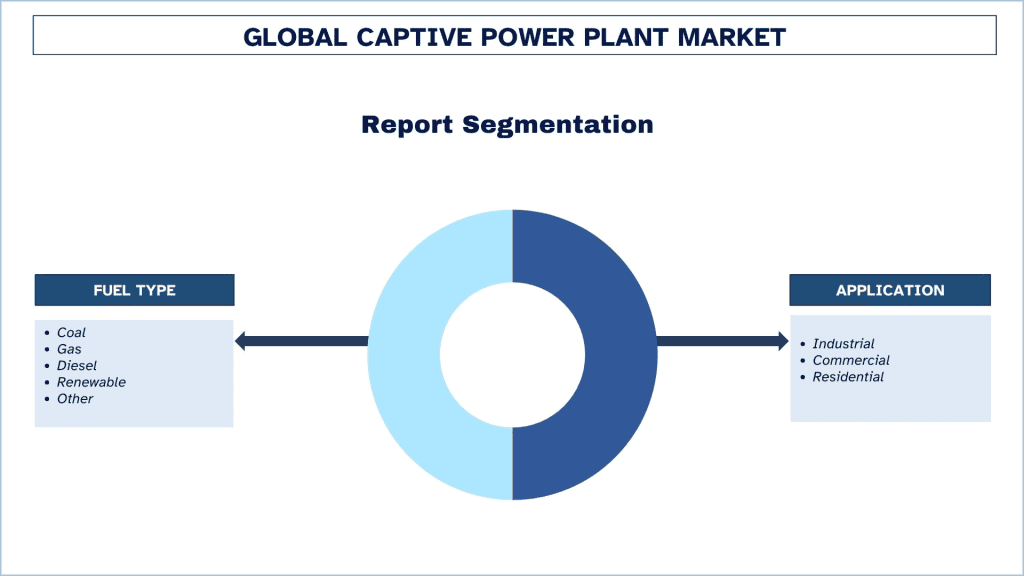
Es wird erwartet, dass Nordamerika während des Prognosezeitraums mit einer signifikanten CAGR wächst
Der nordamerikanische Markt für Eigenstromerzeugungsanlagen durchläuft erhebliche Veränderungen, die durch technologische Fortschritte, regulatorische Änderungen und sich entwickelnde Energiebedürfnisse angetrieben werden. Eigenstromerzeugungsanlagen, also Anlagen, die der Erzeugung von Strom für einen bestimmten Industrie- oder Gewerbenutzer dienen und nicht für den Verkauf an ein Versorgungsunternehmen oder die Öffentlichkeit bestimmt sind, werden in der Region immer relevanter. Diese Anlagen können mit verschiedenen Energiequellen betrieben werden, darunter Erdgas, Kohle, erneuerbare Energien wie Solar- und Windenergie und sogar Hybridsysteme, die mehrere Technologien kombinieren. So kündigte Tesla beispielsweise im Jahr 2023 die Erweiterung seiner Gigafactory in Nevada an, die eine Eigenstromerzeugungsanlage mit erneuerbaren Energiequellen umfassen wird. In ähnlicher Weise hat Amazon in eine solare Eigenstromerzeugungsanlage investiert, um seine Rechenzentren in Virginia zu betreiben, was den wachsenden Trend von Technologiegiganten widerspiegelt, ihre Energiequellen zu sichern.
Die Entwicklung von Eigenstromerzeugungsanlagen kann für Industrien zu erheblichen Kosteneinsparungen führen. Diese Einsparungen können dann in das Unternehmen reinvestiert werden, was möglicherweise zu Arbeitsplatzschaffung und Wirtschaftswachstum führt. Darüber hinaus profitieren lokale Volkswirtschaften von der Errichtung und Wartung dieser Anlagen. Da immer mehr Industrien Eigenstromerzeugungsanlagen einsetzen, könnte es zu einer Verschiebung der Nachfragemuster im öffentlichen Netz kommen. Dies könnte zu geringeren Einnahmen für Versorgungsunternehmen, aber auch potenziell zu geringerer Netzüberlastung und stabileren Strompreisen für andere Verbraucher führen. Eigenstromerzeugungsanlagen, insbesondere solche, die erneuerbare Energiequellen nutzen, können zur Reduzierung der Treibhausgasemissionen beitragen. Industrien können ihren CO2-Fußabdruck deutlich senken und sich so an umfassendere Umweltziele und -vorschriften anpassen.
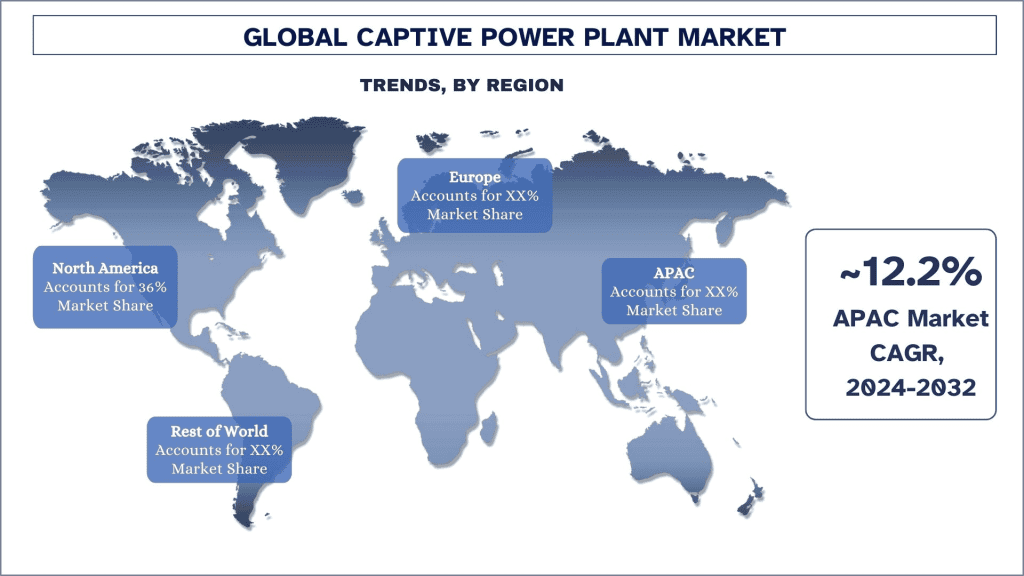
Branchenüberblick über Eigenstromerzeugungsanlagen
Der Markt für Eigenstromerzeugungsanlagen ist wettbewerbsintensiv und fragmentiert, mit der Präsenz mehrerer globaler und internationaler Marktteilnehmer. Die wichtigsten Akteure verfolgen unterschiedliche Wachstumsstrategien, um ihre Marktpräsenz zu verbessern, wie z. B. Partnerschaften, Vereinbarungen, Kooperationen, Produkteinführungen, geografische Expansionen sowie Fusionen und Übernahmen. Einige der wichtigsten Akteure, die auf dem Markt tätig sind, sind General Electric (GE) Power, Siemens AG, Caterpillar Inc., ABB, Wärtsilä, Cummins Inc, Mitsubishi Heavy Industries, Rolls-Royce Power Systems, MAN Energy Solutions und Doosan Heavy Industries & Construction.
Nachrichten zum Markt für Eigenstromerzeugungsanlagen
Siemens:Im November 2021 nahm Siemens in Deutschland eine 150 MW Wind-Eigenstromerzeugungsanlage in Betrieb, um seine Fertigungsstätten mit Strom zu versorgen. Dieses Projekt ist Teil der Siemens-Strategie, bis 2030 Klimaneutralität zu erreichen.
Reliance Industries:Im Dezember 2021 nahm Reliance Industries in Jamnagar, Indien, eine 500 MW Solar-Eigenstromerzeugungsanlage in Betrieb. Ziel dieses Projekts ist es, seinen petrochemischen Komplex mit Strom zu versorgen und die Abhängigkeit von konventionellen Energiequellen zu verringern.
Marktberichtsabdeckung für Eigenstromerzeugungsanlagen
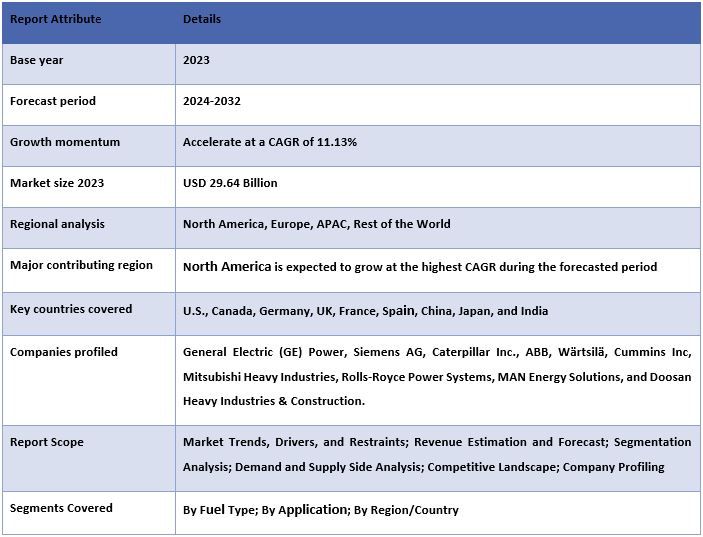
Gründe für den Kauf dieses Berichts:
- Die Studie umfasst eine Marktgrößen- und Prognoseanalyse, die von authentifizierten wichtigen Branchenexperten validiert wurde.
- Der Bericht präsentiert einen kurzen Überblick über die Gesamtleistung der Branche auf einen Blick.
- Der Bericht enthält eine eingehende Analyse prominenter Branchenakteure mit einem primären Fokus auf wichtige Finanzkennzahlen des Geschäfts, Produktportfolios, Expansionsstrategien und jüngsten Entwicklungen.
- Detaillierte Untersuchung der treibenden Kräfte, Einschränkungen, wichtigsten Trends und Chancen in der Branche.
- Die Studie deckt den Markt umfassend über verschiedene Segmente ab.
- Detaillierte Analyse der Branche auf regionaler Ebene.
Anpassungsoptionen:
Der globale Markt für Eigenstromerzeugungsanlagen kann weiter an die Anforderungen oder jedes andere Marktsegment angepasst werden. Darüber hinaus versteht UMI, dass Sie möglicherweise Ihre eigenen Geschäftsanforderungen haben, daher können Sie sich gerne mit uns in Verbindung setzen, um einen Bericht zu erhalten, der Ihren Anforderungen vollständig entspricht.
Inhaltsverzeichnis
Forschungsmethodik für die Marktanalyse von Eigenstromerzeugungsanlagen (2024-2032)
Die Analyse des historischen Marktes, die Schätzung des aktuellen Marktes und die Prognose des zukünftigen Marktes des globalen Marktes für Eigenstromerzeugungsanlagen waren die drei Hauptschritte, die unternommen wurden, um die Akzeptanz von Eigenstromerzeugungsanlagen in wichtigen Regionen weltweit zu erstellen und zu analysieren. Es wurden umfassende Sekundärrecherchen durchgeführt, um die historischen Marktzahlen zu sammeln und die aktuelle Marktgröße zu schätzen. Zweitens wurden zur Validierung dieser Erkenntnisse zahlreiche Ergebnisse und Annahmen berücksichtigt. Darüber hinaus wurden umfassende Primärinterviews mit Branchenexperten in der gesamten Wertschöpfungskette des globalen Marktes für Eigenstromerzeugungsanlagen durchgeführt. Nach der Annahme und Validierung von Marktzahlen durch Primärinterviews verwendeten wir einen Top-down/Bottom-up-Ansatz, um die vollständige Marktgröße zu prognostizieren. Danach wurden Methoden der Marktaufschlüsselung und Datentriangulation angewendet, um die Marktgröße von Segmenten und Untersegmenten der Branche zu schätzen und zu analysieren. Die detaillierte Methodik wird im Folgenden erläutert:
Analyse der historischen Marktgröße
Schritt 1: Eingehende Untersuchung von Sekundärquellen:
Eine detaillierte Sekundärstudie wurde durchgeführt, um die historische Marktgröße des Marktes für Eigenstromerzeugungsanlagen aus unternehmensinternen Quellen wie Jahresberichten und Finanzberichten, Leistungspräsentationen, Pressemitteilungen usw. und externen Quellen wie Fachzeitschriften, Nachrichten & Artikeln, Veröffentlichungen der Regierung, Veröffentlichungen von Wettbewerbern, Branchenberichten, Datenbanken von Drittanbietern und anderen glaubwürdigen Veröffentlichungen zu erhalten.
Schritt 2: Marktsegmentierung:
Nachdem wir die historische Marktgröße des Marktes für Eigenstromerzeugungsanlagen ermittelt hatten, führten wir eine detaillierte Sekundäranalyse durch, um historische Markteinblicke und Marktanteile für verschiedene Segmente und Untersegmente für wichtige Regionen zu sammeln. Die wichtigsten Segmente sind im Bericht als Brennstofftyp und Anwendung enthalten. Es wurden weitere Analysen auf Länderebene durchgeführt, um die Gesamtakzeptanz von Testmodellen in dieser Region zu bewerten.
Schritt 3: Faktorenanalyse:
Nach dem Erwerb der historischen Marktgröße verschiedener Segmente und Untersegmente führten wir eine detaillierte Faktorenanalyse durch, um die aktuelle Marktgröße des Marktes für Eigenstromerzeugungsanlagen zu schätzen. Darüber hinaus führten wir eine Faktorenanalyse unter Verwendung abhängiger und unabhängiger Variablen wie Brennstofftyp und Anwendung des Marktes für Eigenstromerzeugungsanlagen durch. Es wurde eine gründliche Analyse der Angebots- und Nachfrageszenarien unter Berücksichtigung der wichtigsten Partnerschaften, Fusionen und Übernahmen, Geschäftserweiterungen und Produkteinführungen im Marktsektor für Eigenstromerzeugungsanlagen auf der ganzen Welt durchgeführt.
Schätzung und Prognose der aktuellen Marktgröße
Aktuelle Marktgrößenbestimmung:Basierend auf umsetzbaren Erkenntnissen aus den oben genannten 3 Schritten sind wir zu der aktuellen Marktgröße, den wichtigsten Akteuren auf dem globalen Markt für Eigenstromerzeugungsanlagen und den Marktanteilen der Segmente gelangt. Alle erforderlichen prozentualen Anteile, Aufteilungen und Marktsegmentierungen wurden unter Verwendung des oben genannten sekundären Ansatzes ermittelt und durch Primärinterviews verifiziert.
Schätzung und Prognose:Für die Marktschätzung und -prognose wurden den verschiedenen Faktoren, einschließlich der Treiber und Trends, Einschränkungen und Chancen für die Stakeholder, Gewichte zugewiesen. Nach der Analyse dieser Faktoren wurden relevante Prognosetechniken, d. h. der Top-down/Bottom-up-Ansatz, angewendet, um die Marktprognose für 2032 für verschiedene Segmente und Untersegmente in den wichtigsten Märkten weltweit zu erstellen. Die Forschungsmethodik zur Schätzung der Marktgröße umfasst:
- Die Marktgröße der Branche in Bezug auf den Umsatz (USD) und die Akzeptanzrate des Marktes für Eigenstromerzeugungsanlagen in den wichtigsten Märkten im Inland
- Alle prozentualen Anteile, Aufteilungen und Aufschlüsselungen der Marktsegmente und Untersegmente
- Schlüsselakteure auf dem globalen Markt für Eigenstromerzeugungsanlagen in Bezug auf die angebotenen Produkte. Ebenso die Wachstumsstrategien, die diese Akteure anwenden, um in dem schnell wachsenden Markt zu konkurrieren.
Validierung von Marktgröße und -anteil
Primärforschung:Detaillierte Interviews wurden mit den wichtigsten Meinungsführern (KOLs) geführt, darunter Führungskräfte auf oberster Ebene (CXO/VPs, Vertriebsleiter, Marketingleiter, Betriebsleiter, Regionalleiter, Länderleiter usw.) in allen wichtigen Regionen. Die Ergebnisse der Primärforschung wurden dann zusammengefasst und eine statistische Analyse durchgeführt, um die aufgestellte Hypothese zu belegen. Die Erkenntnisse aus der Primärforschung wurden mit den Sekundärergebnissen konsolidiert, wodurch Informationen in umsetzbare Erkenntnisse umgewandelt wurden.
Aufteilung der primären Teilnehmer in verschiedenen Regionen
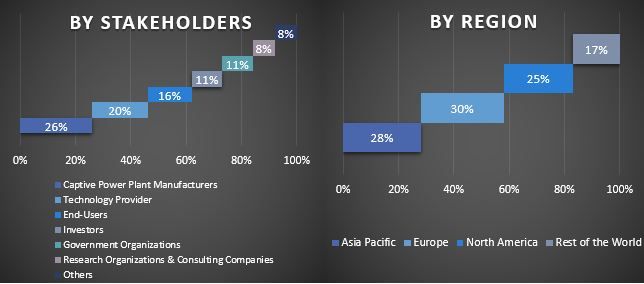
Markttechnik
Die Datentriangulationstechnik wurde eingesetzt, um die gesamte Marktschätzung abzuschließen und präzise statistische Zahlen für jedes Segment und Untersegment des globalen Marktes für Eigenstromerzeugungsanlagen zu erhalten. Die Daten wurden in mehrere Segmente und Untersegmente aufgeteilt, nachdem verschiedene Parameter und Trends in den Bereichen Brennstoffart und Anwendung auf dem globalen Markt für Eigenstromerzeugungsanlagen untersucht wurden.
Das Hauptziel der Global Captive Power Plant Market Study
Die aktuellen und zukünftigen Markttrends des globalen Marktes für Eigenstromerzeugungsanlagen wurden in der Studie ermittelt. Investoren können strategische Erkenntnisse gewinnen, um ihre Investitionsentscheidungen auf der Grundlage der in der Studie durchgeführten qualitativen und quantitativen Analysen zu treffen. Aktuelle und zukünftige Markttrends bestimmten die Gesamtattraktivität des Marktes auf regionaler Ebene und boten den Industrieakteuren eine Plattform, um den unerschlossenen Markt zu nutzen und von einem First-Mover-Vorteil zu profitieren. Weitere quantitative Ziele der Studien umfassen:
- Analysieren Sie die aktuelle und prognostizierte Marktgröße des Marktes für Eigenstromerzeugungsanlagen in Bezug auf den Wert (USD). Analysieren Sie auch die aktuelle und prognostizierte Marktgröße verschiedener Segmente und Untersegmente.
- Zu den Segmenten der Studie gehören die Bereiche Brennstoffart und Anwendung.
- Definieren und analysieren Sie den Regulierungsrahmen für die Eigenstromerzeugungsanlage
- Analysieren Sie die Wertschöpfungskette, die mit der Präsenz verschiedener Intermediäre verbunden ist, sowie die Analyse des Kunden- und Wettbewerbsverhaltens der Branche.
- Analysieren Sie die aktuelle und prognostizierte Marktgröße des Marktes für Eigenstromerzeugungsanlagen für die wichtigsten Regionen.
- Zu den wichtigsten Ländern der in dem Bericht untersuchten Regionen gehören Asien-Pazifik, Europa, Nordamerika und der Rest der Welt
- Unternehmensprofile des Marktes für Eigenstromerzeugungsanlagen und die Wachstumsstrategien, die von den Marktteilnehmern verfolgt werden, um sich in dem schnell wachsenden Markt zu behaupten.
- Detaillierte Analyse der Branche auf regionaler Ebene
Häufig gestellte Fragen FAQs
Q1: Wie groß ist die aktuelle Marktgröße und das Wachstumspotenzial des Captive Power Plant-Marktes?
Q2: Welche Faktoren treiben das Wachstum des Captive Power Plant-Marktes an?
Q3: Welches Segment hat den größten Anteil am Captive Power Plant-Markt nach Brennstoffart?
Q4: Was sind die neuen Technologien und Trends im Captive Power Plant-Markt?
Q5: Welche Region wird den Captive Power Plant-Markt dominieren?
Verwandt Berichte
Kunden, die diesen Artikel gekauft haben, kauften auch

